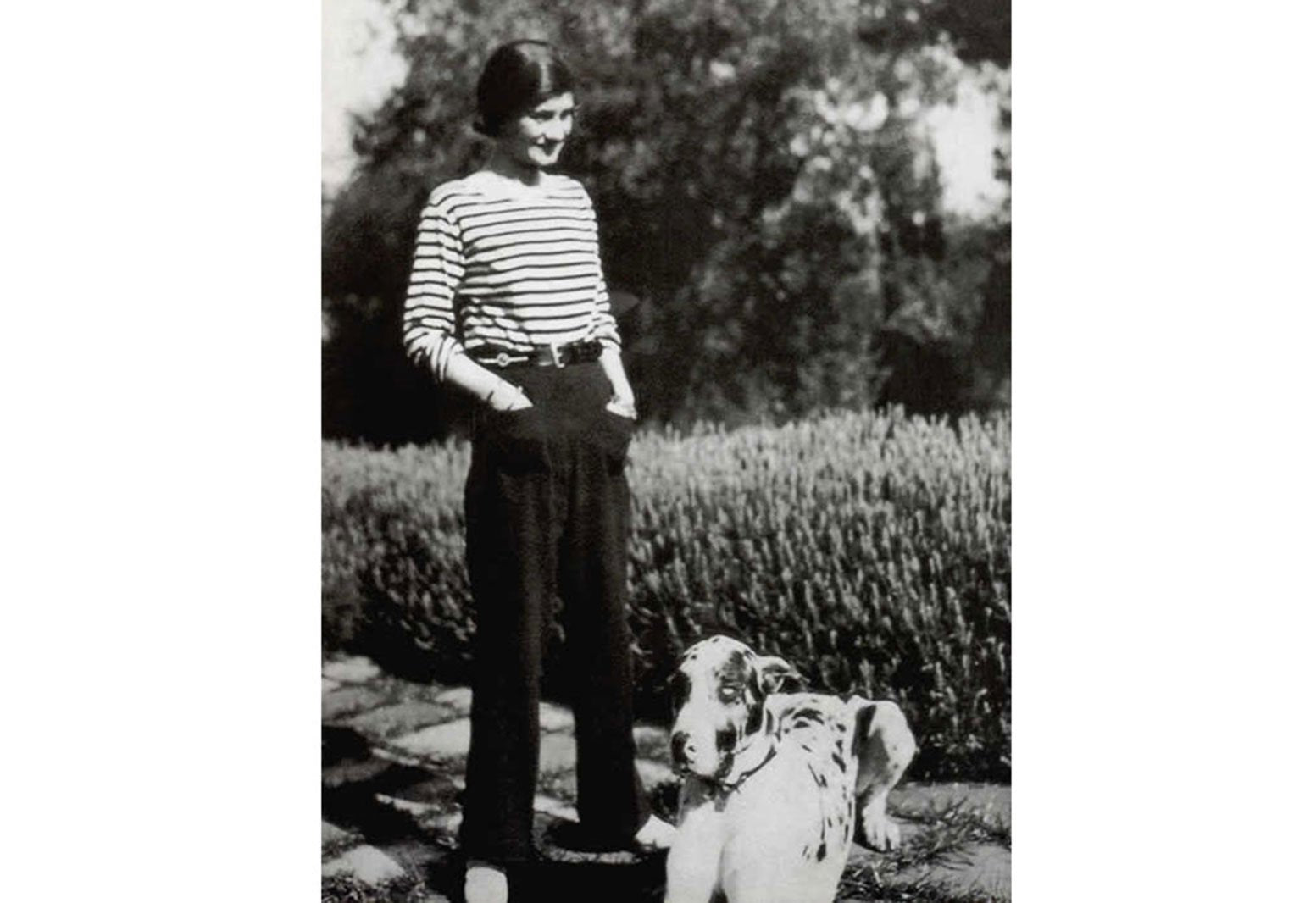
Andie Cusick
I saw him pacing through the bedroom and the lofts like those sailors who can never shake off the habit of keeping watch and in the heart of some Breton retreat get up and dress at regular intervals to inspect an earthly horizon. Alain Fournier, Le Grand Meaulnes.
Twenty-one stripes, a boat-shaped neckline, three-quarter-length sleeves, in navy and cream... The traditional Breton shirt has spectacularly stood the test of time from its inception in 1858. Originally worn by French sailors in Brittany, the garment was designed as workwear each element serving a functional purpose. The wide neck permitted sailors to dress quickly (as Fournier describes) and the horizontal stripes darting from arm to arm across the chest stood out against rough seas, allowing any overboard sailor to be hastily spotted. The length of the sleeves ensured no cloth would get caught up in the riggings of the ship, while the woven cotton could stand the inclement wind and salt water, at the same time retaining a lightness and ease of movement. To add a dash more historical context to this distinctive item, the 21 stripes on a Breton top also bear significance representing each of Napoleon's victories.
This sea-faring apparel didn't become a fashionable item, however, until much later around 1920. Its transition from utility garment to style staple began with the glamorous American couple Gerald and Sara Murphy who, having been introduced to the area by Cole Porter, spent their summers in the French Riviera. As fashion historian Amber Butchart recently explained on Radio 4's Woman's Hour, The story goes that one day they went shopping in Marseille for supplies for their boat and found these striped sailor tops and distributed them amongst their friends. This sounds quite ordinary but when you think their friends were people like F. Scott Fitzgerald and Pablo Picasso obviously real trendsetters it took off from there.'
At the same time Coco Chanel, who often wore Breton stripes to Ballet Russes rehearsals, made them part of her fashion collection. By the early 1930s it was really becoming a fashion staple, even donning the cover of French Vogue,' added Butchart.
Since then the shirt the French call la Marinire has been de rigueur in every decade, gracing not just French artists and intellectuals but style icons across the globe, from Audrey Hepburn, Brigitte Bardot and Jean Seberg to James Dean, Patti Smith and Kate Moss.
The versatility of the Breton shirt makes it not just a classic piece but a garment that, for all its ubiquity, can be made one's own. It can be bohemian, prim and pretty, slightly punk or pared down, while the colours, too, are no longer uniform: vivid red and white and aqua stripes are as recognisable today as navy and cream. Worn with a cropped trouser and ballet flats the Breton assumes a gamine air. Paired with belted, wide-legged trousers it channels Chanel. A boxy Breton with a boy jean is a lazy, insouciant ensemble that means, even when far from the Cte d'Azur, you can still make like a French ingnue.
Click here to view Toast's range of Bretons
Pictured: Coco Chanel
Add a comment